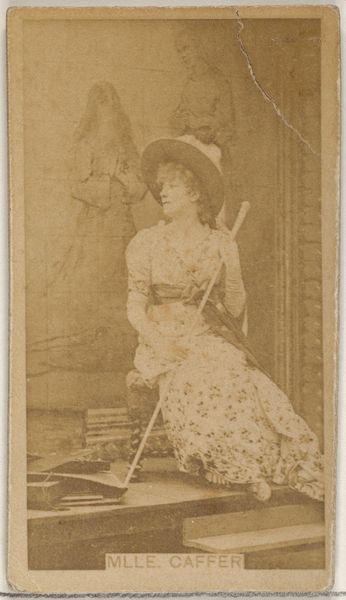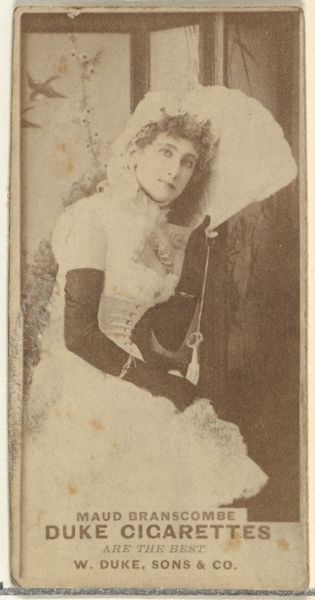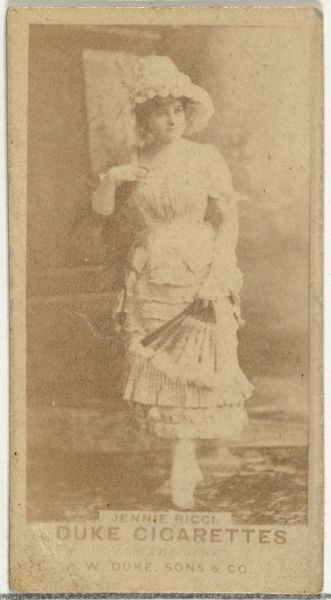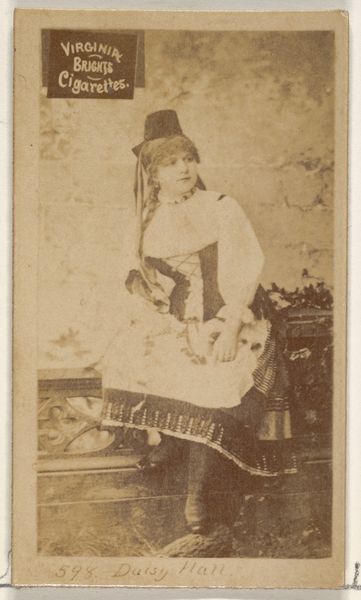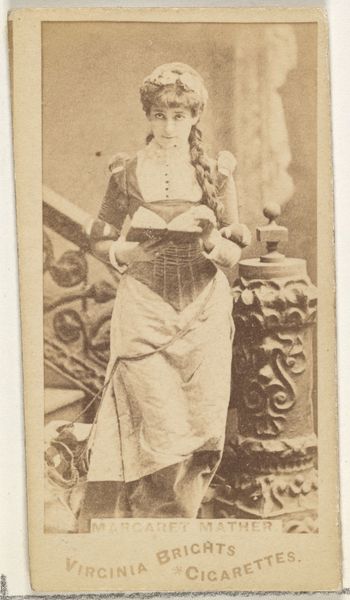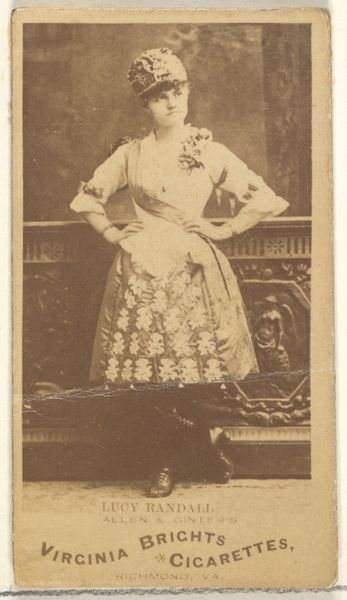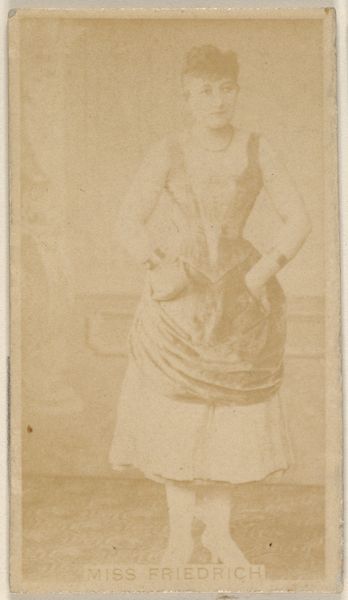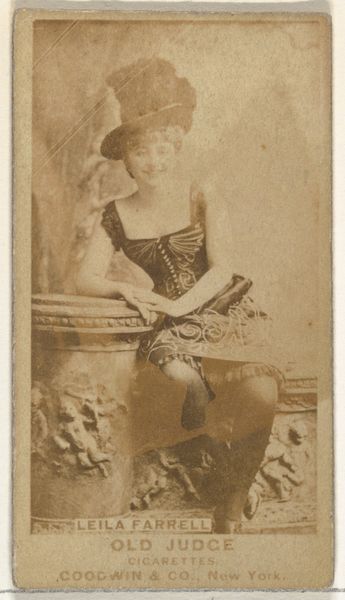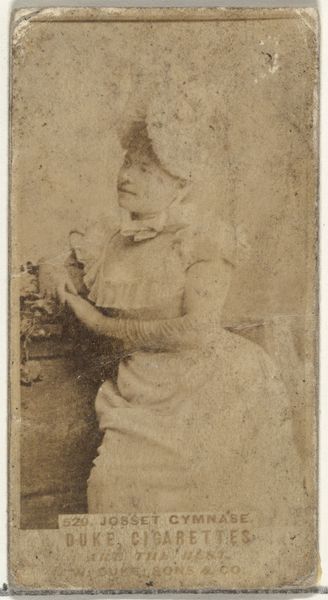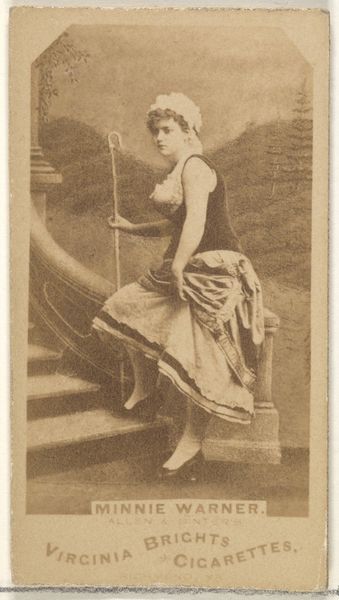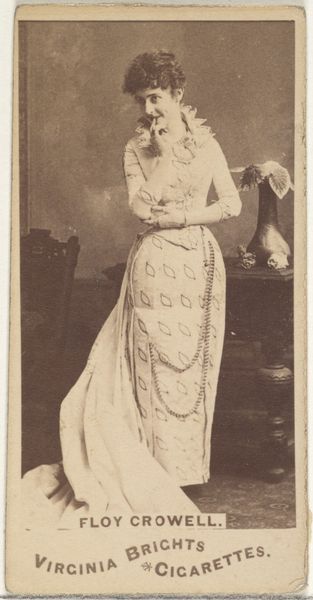
Card Number 543, Violet Cameron, from the Actors and Actresses series (N145-7) issued by Duke Sons & Co. to promote Duke Cigarettes 1880s
0:00
0:00
print, photography
#
portrait
#
toned paper
# print
#
figuration
#
photography
Dimensions: Sheet: 2 11/16 × 1 3/8 in. (6.8 × 3.5 cm)
Copyright: Public Domain
Curator: This small, intriguing card from the 1880s is part of the "Actors and Actresses" series (N145-7), issued by Duke Sons & Co. as cigarette inserts. The photograph depicts Violet Cameron. Editor: Immediately, I'm struck by the rather staged feel and its small size. It almost feels like looking at a memory fragment; what sort of feelings do you sense? Curator: Initially, a bit sad; faded images usually spark that reaction in me. Looking at the image of Violet, there is some intriguing imagery. There is what appears to be a theatrical garden set, evoking a sense of artificiality but also theatrical charm. Editor: True! And let’s not forget the card itself. These were essentially miniature billboards inserted into cigarette packs. They’re less about the artistic expression and more about promotional capitalism. It reflects the industrial processes involved - mass printing techniques, the labor in factories, and ultimately, consumerism through the promotion of tobacco. How do you see her in a cultural context? Curator: Ah, but is it? Surely these trade cards provided exposure to figures such as Violet, embedding cultural ideals in the collective visual memory? Editor: Possibly, though perhaps on a surface level. These weren't necessarily meant for deep reflection, were they? In considering the labor practices around both cigarette production and acting careers - that image becomes much more of a product. What is really being promoted here? Not her performance; simply an idealized representation tied to brand association. Curator: That's cynical, though it can't be denied there is always a profit motive. But it speaks to a larger theme as the placement of women's images, particularly actresses and dancers, becomes symbols for the new type of modern, commodity culture that was forming around the late 19th century. Editor: Alright, perhaps we've both come to a useful reflection regarding her representation within this artwork!
Comments
No comments
Be the first to comment and join the conversation on the ultimate creative platform.
